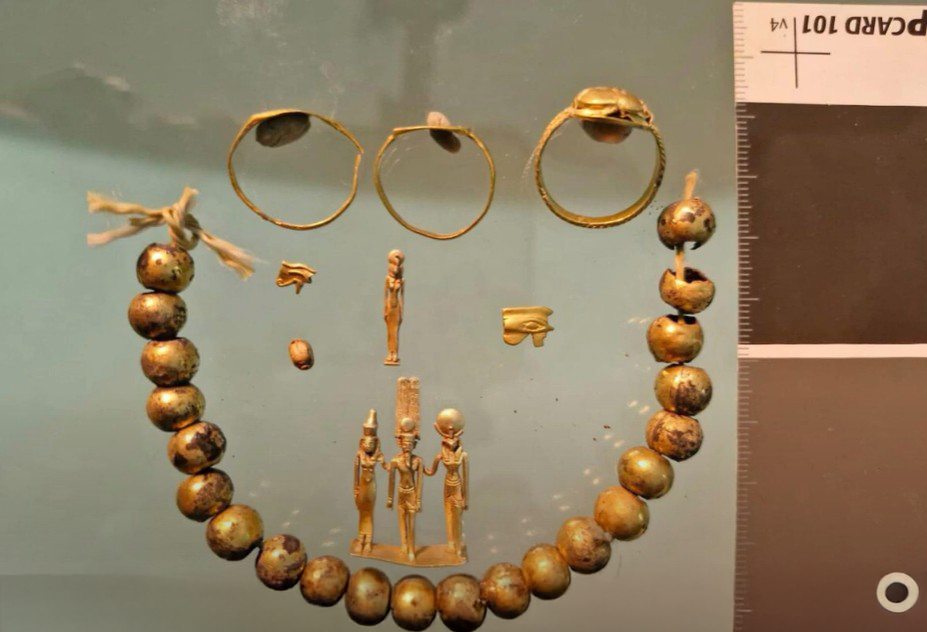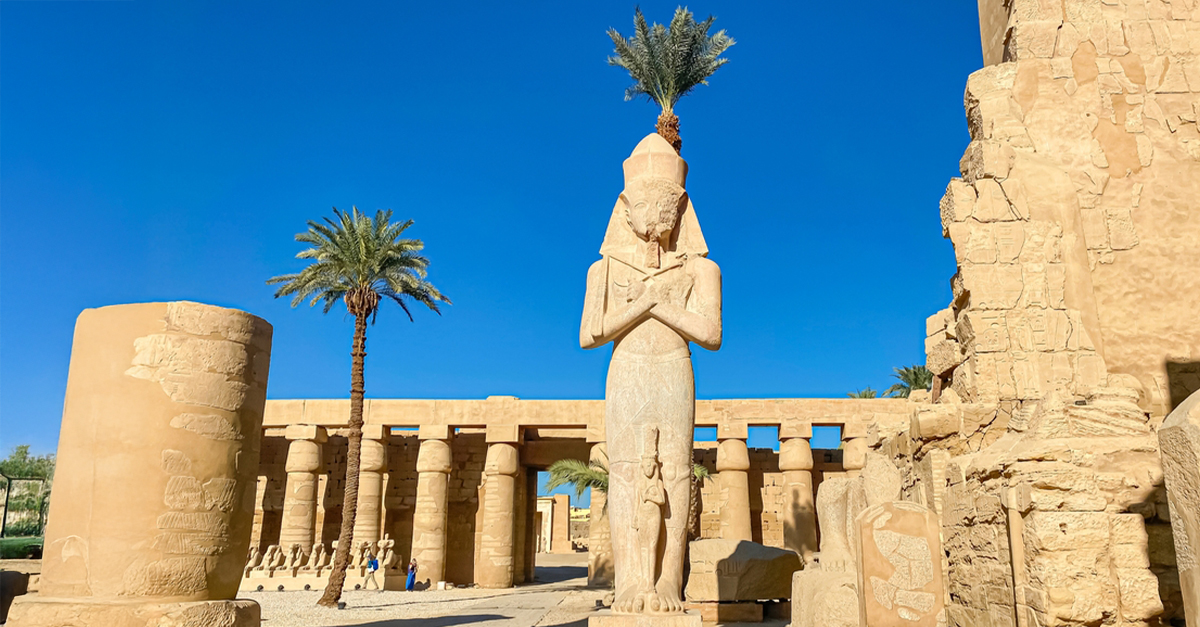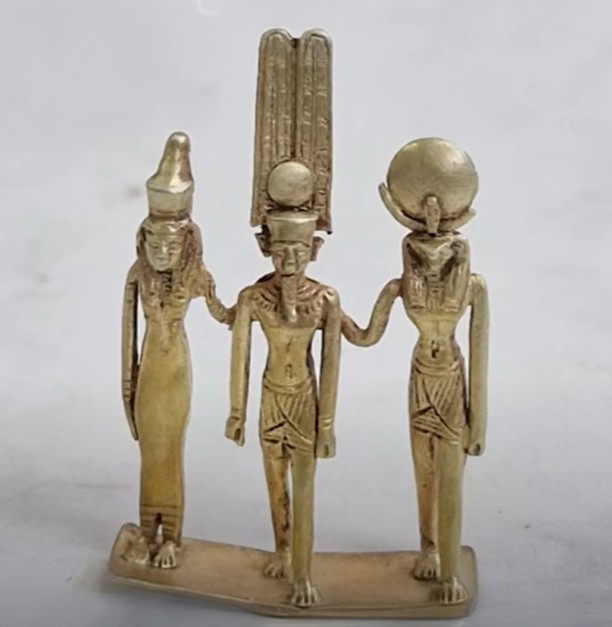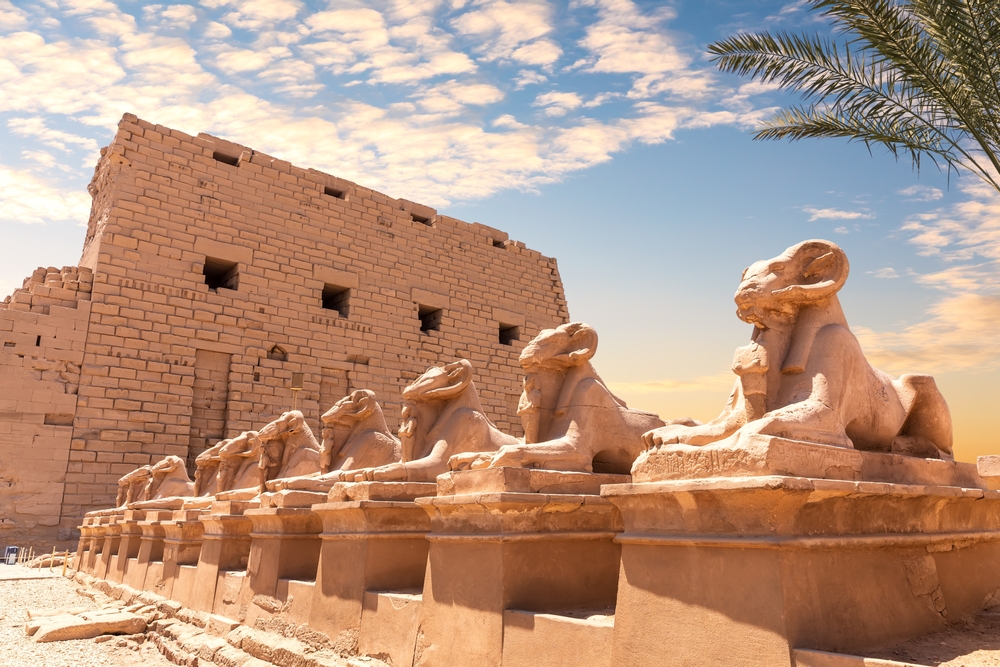A new discovery at Egypt’s famous Karnak Temple complex has floored the world’s archaeologists and Egyptologists: a spectacular trove of priceless jewelry and amulets dating to the 26th Dynasty, also known as the Saite Period (664–525 BCE). These items now on view after 2,600 years, are a dazzling display of craftsmanship, symbolism, and spiritual life in ancient Egypt.
A Hoard Of Hidden Wealth
The find happened while archaeologists were doing a mundane dig in the southern sanctuary of Karnak. This is one of ancient Egypt’s biggest and most holy temples. Led by a joint Egyptian-French team, archaeologists dug a hidden deposit out from under a bunch of stone blocks. When they opened it, they saw a ravishing collection of gold and semi-precious jewelry that had been purposely hidden for ritual or protective reasons.
Gold, Carnelian, And Lapis Brilliance
Among the treasures were finely worked gold earrings, scarab-shaped amulets, bead necklaces of lapis lazuli and carnelian, and finger rings with engraved symbols of deities. The quality workmanship indicates elite ownership, perhaps connected to priests or high-ranking temple bureaucrats. The designs resonate with deep religious themes, honoring deities like Amun-Ra and Isis, with timeless symbols of rebirth, protection, and divine authority. Of particular interest is a spectacular gold triptych of figures representing the gods Amun, Mut, and Khonsu.
Signs Of A Saite Renaissance
Many people view the 26th, or Saite Dynasty as a time of resurgence in Egyptian culture. Foreign powers loomed on the borders, but this period witnessed a return to classical artistic forms, religious traditions, and ambitious architectural projects. The Karnak discovery is another chapter in that narrative: the unearthed objects echo styles from earlier dynasties but have signs of localized Saite refinements, showing both respect for tradition and artistic progress.
An Amulet's Sacred Power
One of the greatest things about this find is the sheer variety of different amulets. They were used in both life and death for magical protection. Many depict the Eye of Horus, djed pillars (symbolizing stability), and miniature figures of gods. These kinds of items would have been worn by the living or placed in tombs with the dead, giving the wearer divine safety in the afterlife.
 Ancient Egyptian Jewellry Found at Karnak Temple! Ancient Egypt Alive, YouTube
Ancient Egyptian Jewellry Found at Karnak Temple! Ancient Egypt Alive, YouTube
A Burial Or Ritual Hoard?
Scholars are still squabbling over the intention behind the deposit. Some insist it belonged to a high-ranking Egyptian who was dead set on keeping his fortune safely hidden away during times of turmoil. Others say that it was part of a ritual foundation deposit, “seeding” the temple structure with the sacred power of gold and precious stones. Whatever the case may be, its intact nature and exact placement show beyond a doubt that someone hid it there on purpose.
The Daily Life Of Egypt’s Mightiest Temple
Karnak was a place of worship, but also a sprawling maze of temples, processional routes, and priestly residences. Discoveries like these serve as rare glimpses into the lives of those who served the gods. The jewelry’s materials likely came from trade routes shared with lands far from the frontiers of Egypt. It's yet more evidence of the temple’s stupendous wealth and its importance as a spiritual and economic center.
Preservation And Future Display
The artifacts are now undergoing conservation at the Luxor Museum, where Egypt’s finest curators are stabilizing delicate beads, metals, and inlays. The work is being done with infinite care, patience, and attention to detail. Once all of it is restored, the treasure will take its place on public display with other prestigious Karnak and 26th Dynasty artifacts, giving visitors a close-up view of ancient Egypt’s jewelry crafts.
A Still Unfolding Legacy
This discovery solidifies Karnak’s role as a treasure trove of Egyptian heritage. As archaeologists grind and dig their way downward into the temple’s depths, they expect more of the unexpected. Each new find illuminates our understanding of a civilization that continues to transfix the world with its wonders. It’s only a matter of time until the next great discovery.
You May Also Like:
History’s Wildest Unsolved Mysteries









